#Jin Dynasty
Text

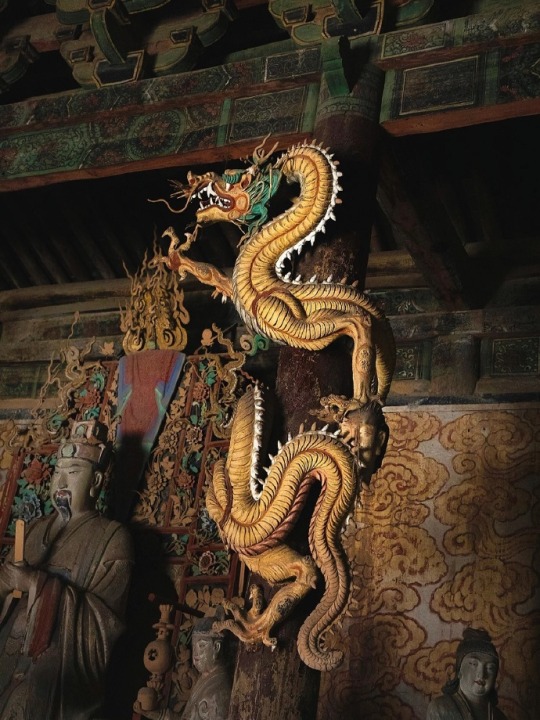

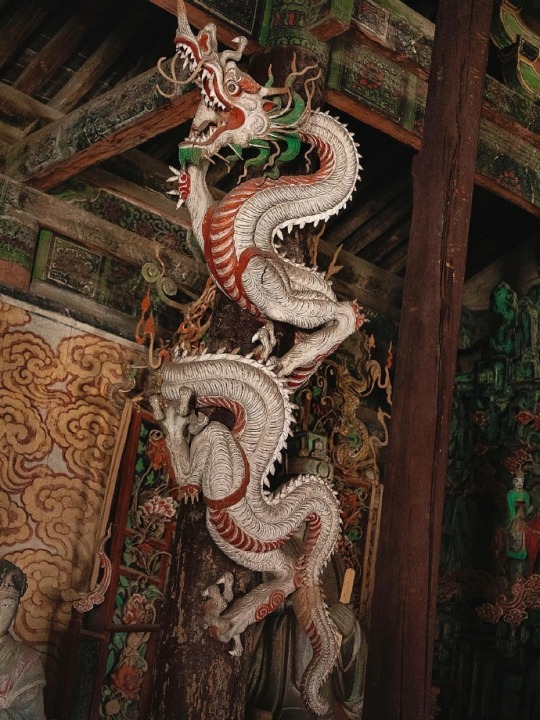

Mythological Realism: Elemental Dragons
Four-color coiled dragons on the pillars of the Supreme Talisman (Taifu) Temple (太符觀).
The dragons are painted in the colors of the primary elements, embodying the archetypal creative forces. In Chinese religious art, almost any concept can be expressed in the language of dragons.) Their children, descendants and relatives frolic on the temple walls among curly clouds.
In view of the striking liveliness, I would classify these images as mythological realism.)
Since its construction in the fifth year of the Jin dynasty (1200), the temple has been repeatedly expanded and supplemented with new buildings over the centuries. Most of the surviving statues are from the Ming dynasty.
The Supreme Talisman Temple is located in Fenyang (汾陽), Shanxi.
Photo: ©故尔耳
#ancient china#chinese culture#chinese art#chinese mythology#ming dynasty#taoist practices#religious art#chinese temple#Taoist temple#taoism#taoist#statue#sculptures#statues#daoism#jin dynasty#dragon#dragons#dragon art#creatures#wood carving#woodworking#temple architecture#wooden architecture#wooden buildings#chinese architecture
385 notes
·
View notes
Text


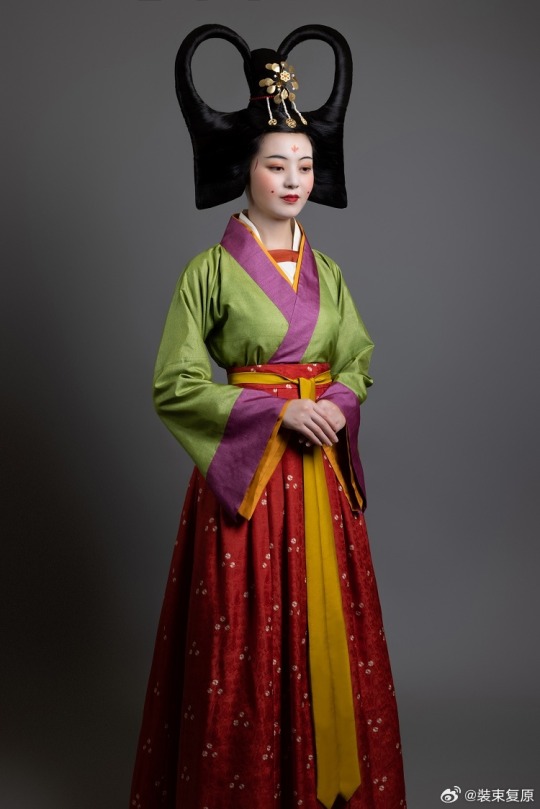


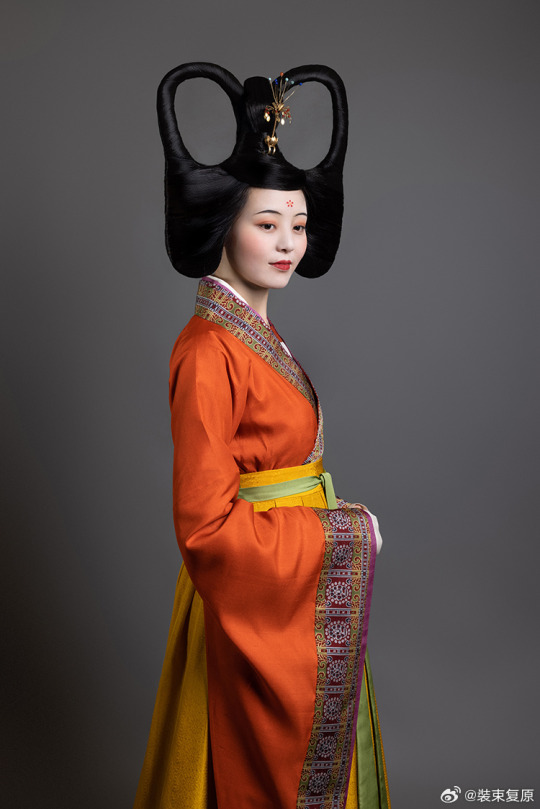

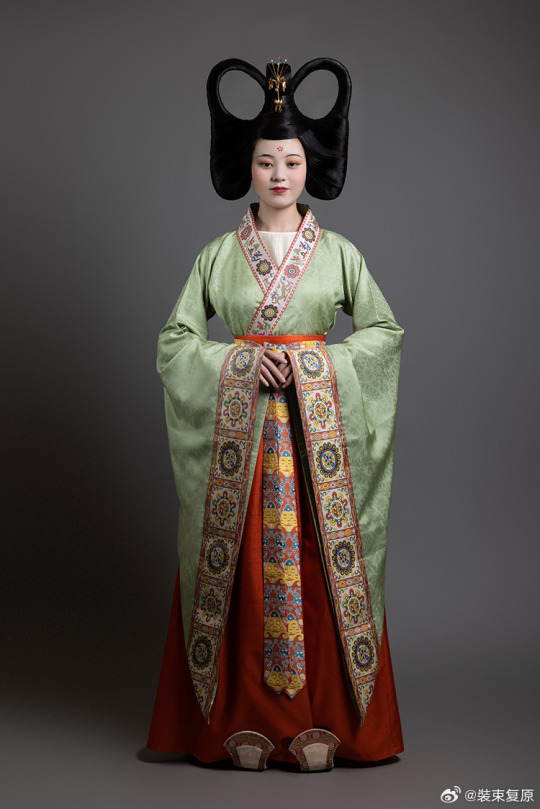

【Historical Reference Artifacts】:
China Southern Dynasties Pottery Female Figurines,37.5 cm high(ps.Part of the figurine is missing)
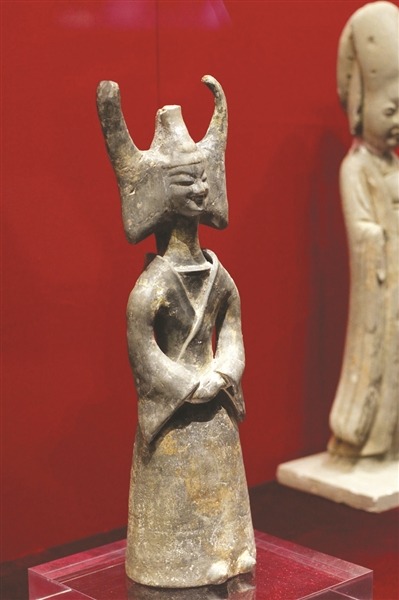
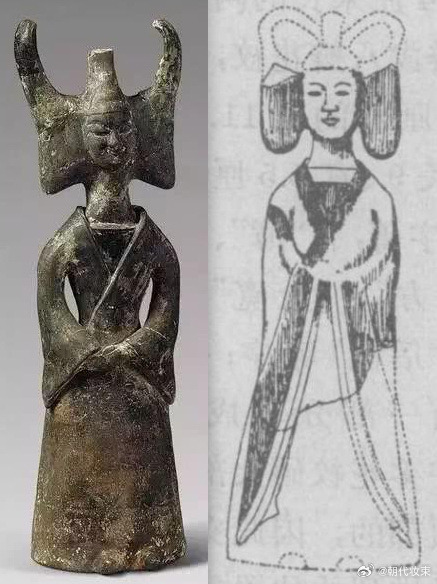
[Hanfu・漢服]Chinese Southern Dynasties(420-589) Traditional Clothing Hanfu & Hairstyle in early Southern Dynasties Period
【History Note of Court lady of the Southern Dynasties】
琼华随步响,幽兰逐袂生。
踟蹰理金翠,容与纳宵清。
Since the Han and Jin Dynasties, there has been a trend of "Tight top and fluffy bottom" in clothing silhouettes. The aristocratic women in the Eastern Jin and Southern Dynasties developed this fashion even more exaggeratedly. The skirts were fluffy and bulging, and the skirt waist was high;
In"Book of Jin·Five Elements/晋书•五行志" records:
“太元中,公主妇女必缓鬓倾髻,以为盛饰。用髲既多,不可恒戴,乃先于木及笼上装之,名曰假髻,或名假头。”至于贫家,不能自办,自号无头,就人借头。
【Translation】
"In Taiyuan Period(376-396), Princesses, aristocrats, and women of the scholar-official class all wear wigs as the grandest attire/style,It was called“缓鬓倾髻”.
---
※缓鬓:means loose hair on the temples
※倾髻:refers to the tilt hair bun
----
it need to use a lot of hair, and they can't be worn constantly. So,they just make a wooden frame, put the wig on it, and then wear it directly on the head, so it is called a "fake hairbun"or"fake head".
Therefore, "fake head" are often in short supply and very expensive. Girls from poor families can't afford fake buns, so they complain that they are "headless". In order not to lose face when attending important occasions, they had to ask someone to borrow it, saying that “I wanted to "borrow head".
---
Until the Southern Dynasties(南朝), this "缓鬓倾髻" hairstyle was getting more perfect, and was even bigger. It put a lot of wigs on the frame, make a tall ring hair bun, and put a "步搖/type of headpiece had dangling gold and pearl pieces which would sway back and forth as one walked." in the front as decoration, which looked magnificent and majestic; with bright face makeup such as “面靥、花子、斜红"etc., it was even more colorful.
————————
Recreation Work: @裝束复原
🔗Weibo:https://weibo.com/1656910125/NbdUC86hb
————————
#chinese hanfu#Southern Dynasties(420-589)#jin dynasty#hanfu#hanfu accessories#hanfu_challenge#chinese traditional clothing#chinese#china#缓鬓倾髻#fake head#wig#hanfu history#china history#ancient china#imperial china#court lady#漢服#汉服#中華風#裝束复原
312 notes
·
View notes
Text
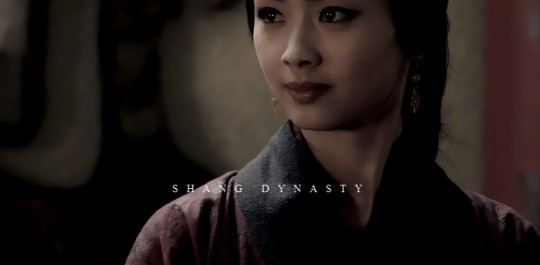
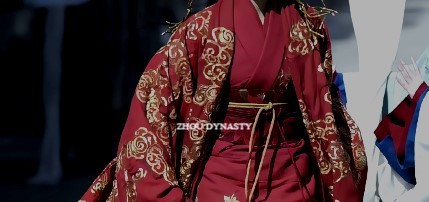


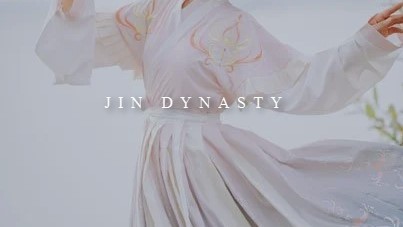

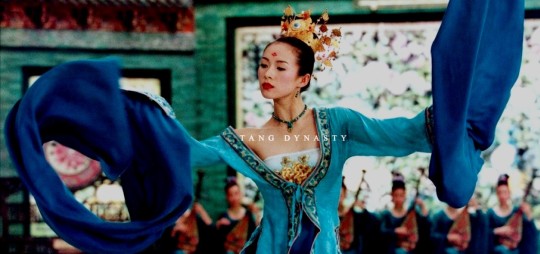


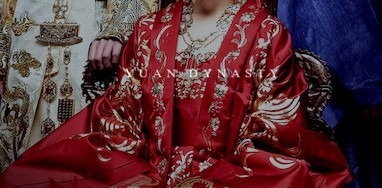

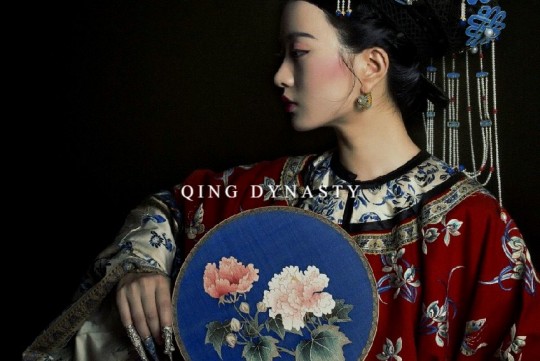
Chinese Dynasties.
Shang | Zhou | Qin | Han | Jin | Sui | Tang | Liao | Song | Yuan | Ming | Qing
#qing dynasty#han dynasty#qin dynasty#shang dynasty#ming dynasty#zhou dynasty#tang dynasty#yuan dynasty#song dynasty#jin dynasty#sui dynasty#liao dynasty#story of yanxi palace#ruyi's royal love in the palace#empress ki#house of the flying daggers#legend of xiao chuo#red cliff#zhao wei#the king's woman#legend of haolan
148 notes
·
View notes
Text
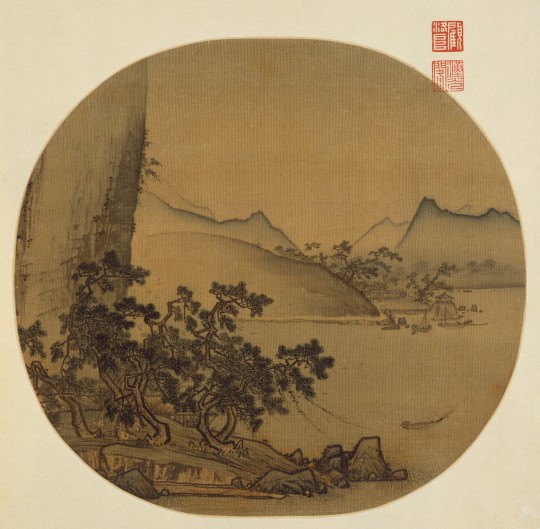
Boats Moored in Wind and Rain, unknown artist (formerly attributed to Yan Ciyu), 1200s (Jin or Yuan Dynasty)
#art#art history#Asian art#China#Chinese art#East Asia#East Asian art#Imperial China#Jin Dynasty#Yuan Dynasty#landscape#landscape painting#landscape art#rain scene#painted fan#album leaf#ink and color on silk#13th century art#Metropolitan Museum of Art
96 notes
·
View notes
Text
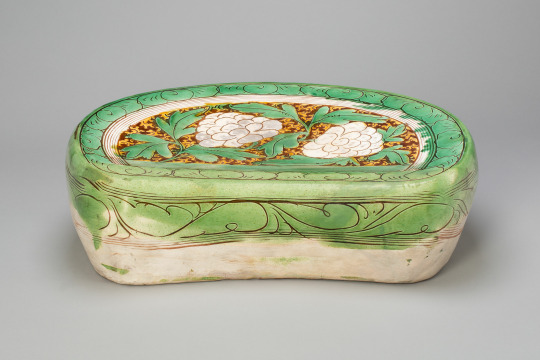
Bean-Shaped Pillow with Peony Scroll
China, Jin dynasty, (1115–1234), 12th/13th century
46 notes
·
View notes
Photo
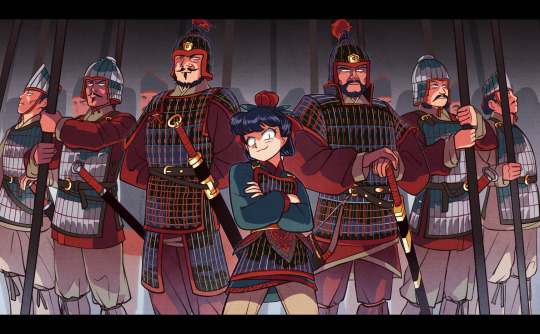
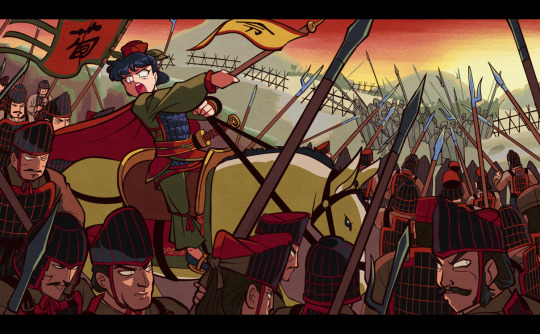
Xun Guan / 荀灌 (303–?)
Born during the tumultuous period of the Western Jin Dynasty.
A descendant of Xún Yù, she liked riding horses, archery & martial skills since little. At age 13, she led a battalion of men to break through a siege to save her father.
For more info: https://www.youtube.com/watch?v=875vyMlh3vI
#chinese history#魏晋南北朝#ancient china#hanfu#chinese armor#jin dynasty#sarraceniart#historical art#warrior girl#汉服#历史
213 notes
·
View notes
Text
Archaeologists in China have unearthed three Great Jin Dynasty tombs, revealing stunning murals that offer a window into the past. These artworks not only depict scenes from daily life and mythology but also reflect the profound cultural values of the era, such as filial piety. This ancient art literally presents history.
19 notes
·
View notes
Text
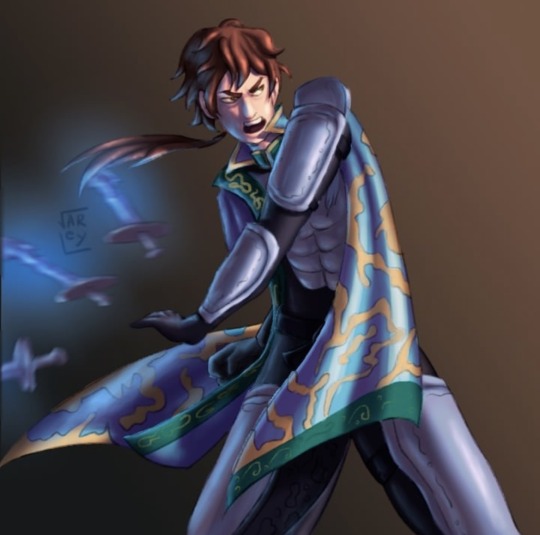
Was trying to learn rendering while making this Zhong Hui 🥲
#dynasty warriors#warriors orochi#koei tecmo#the romance of the three kingdoms#jin dynasty#zhong hui#strategy#rpg#sengoku musou
11 notes
·
View notes
Text

I see u mxtx. I see u
#did some random research on the jin dynasty#i was researching ancient chinese architecture for this fic and somehow ended up here#ANYWAYS i ended up on the jin dynasty wikipedia and this lil gem stood out to me immediately#coincidence?? maybe#but mxtx is a sneaky lil minx i wouldn't put it past her to make the comparisons between rl emperor wu and jun wu#I SEE YOU MXTX#tgcf#jun wu#jin dynasty#also funny how in cql the major clan who takes over after the wen clan is named jin heh#connections all around
4 notes
·
View notes
Text
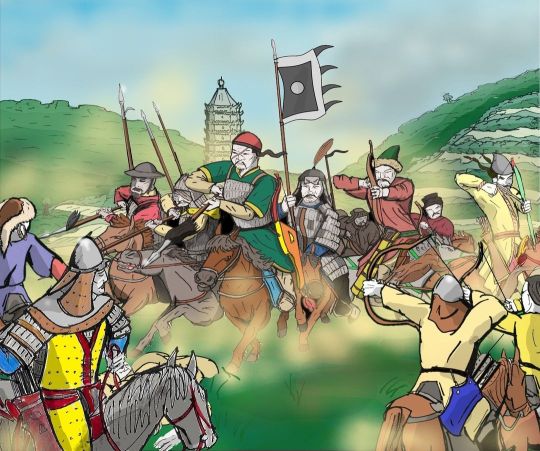
THE JIN DYNASTY'S LOYAL AND FILIAL ARMY, 1231
While the Jin Dynasty's armies were often destroyed by the Mongols, at the very start of the 1230s they experienced a brief period of revival, defeating several Mongol armies in the field.
At the vanguard of these armies, were forces called the Loyal and Filial Armies (Zhongxiao jun 忠孝軍). The name was somewhat ironic; first created in 1223, they were regarded as a ferocious, violent and undisciplined mob, bandits as dangerous to Jin citizenry as they were to the enemy. But their ranks were expanded, and their pay increased, for the Jin recruited them (as much as possible) from deserters from the Mongol armies. It was a diverse unit, made up of northern Chinese, Uyghurs, Naiman, Tangut and even some Qipchaq. They fought primarily as horse archers, and were relied upon both for their ferocity, and familiarity with Mongol tactics.
By the time Ögedei became Great Khan in 1229, the Jin generals Pu'a and Hada were leading the Zhongxiao jun in raids into Mongol-occupied China, and then as vanguards against Mongol armies. Over 1230-1231, they scored a number of victories over Mongols forces (though it seems some of these were minor things that were played up).
A furious Ögedei Khan set out in person against the Jin in 1231, only for one of his generals, a certain Subedei, to be defeated by them at Daohuigu 倒回谷. Ögedei nearly had Subedei permanently removed from command, only to be narrowly talked out of this by his brother Tolui.
As it was, Subedei soon avenged himself; with Tolui, he destroyed most of the Loyal and Filial Troops at the battle of Sanfengshan (三峰山) in February 1232, and soon drove the Jin dynasty to extinction by 1234.
You can watch my new video on the uses of Mongol heavy cavalry and its role against the Jin Dynasty here:
youtube
8 notes
·
View notes
Text

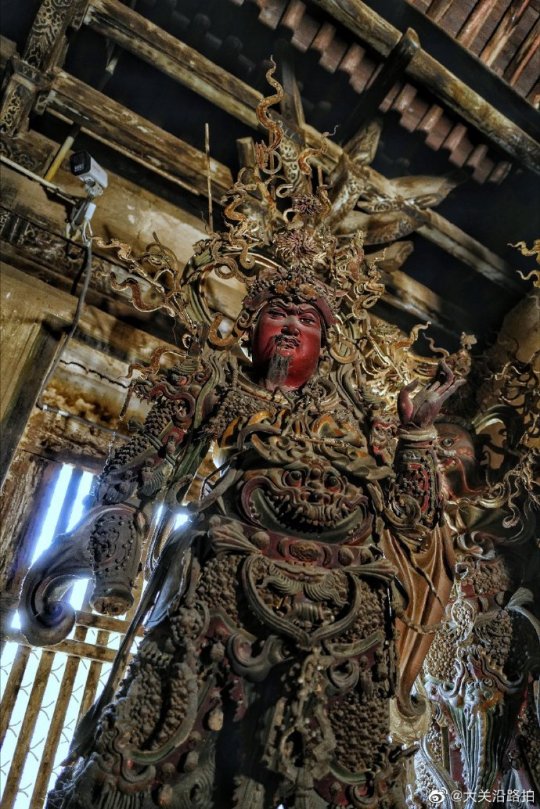
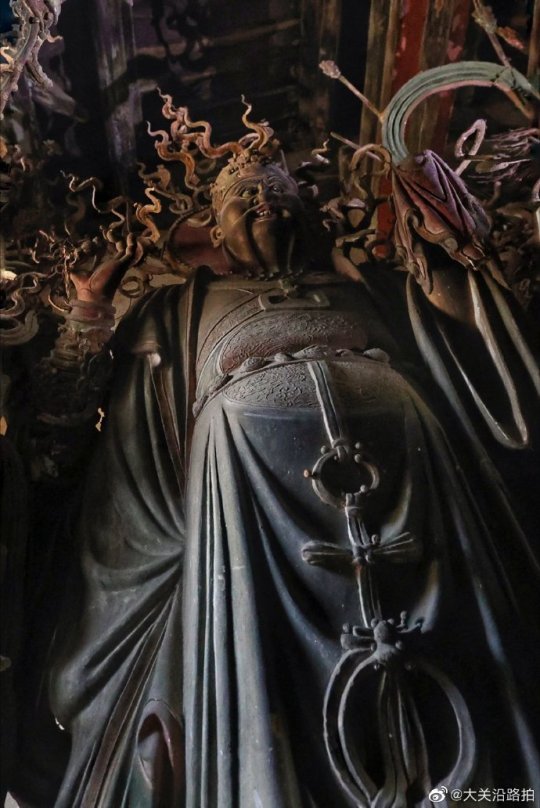

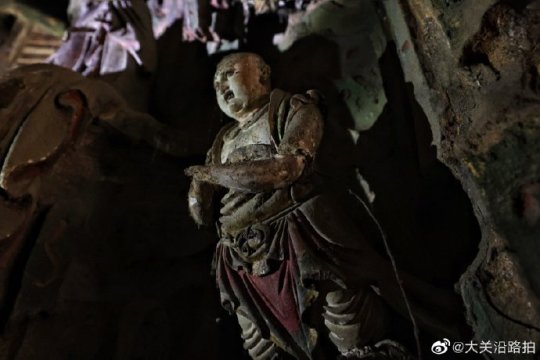




Extreme Baroque: Iron Temple On The Rice Mountain
Grotesque images from the Buddhist Iron Temple (鐵佛寺).
Located on the Rice Mountain (米山), Mixi (米西村) village, Jincheng, Shanxi, the temple is of an unknown construction date. The earliest record on the stone pillar in the main hall dates back to the seventh year of the Dading (大定) period of the Yuan or Jin dynasties. There is evidence that the temple was reconstructed in the third year of Wanli (1575). However, in the county annals, it is mentioned no earlier than the Qing dynasty.
These astonishing, presumably Ming statues owe their creation to the proximity of an iron ore. Iron frames made it possible to give the clay figures intricate poses and frilly decor.
Photo: ©大关沿路拍
#ancient china#chinese culture#chinese mythology#chinese art#chinese architecture#yuan dynasty#jin dynasty#chinese temple#statues#sculptures#scultpure#buddhist temple#buddhist#buddhist deities#religious art#buddhism#ming dynasty#qing dynasty#statuary#religious imagery
129 notes
·
View notes
Text
A stunning tomb. Beautiful architecture.
12 notes
·
View notes
Video
youtube
The Rise and Fall of the Jurchens & Identity Politics As Imperial Policy - Jin Dynasty History
The Jurchen tribes rebelled against their Khitan overlords and exploded into a full-blown dynasty in a relatively short amount of time. To manage and rule their newly created multi-ethnic Jin dynasty, the elites sinicized themselves and used identity politics to maintain their legitimacy.
#history#china#jin dynasty#i think the point at the end abt manchu ethnicity being constructed to bring various groups together as a political bloc is an interesting 1#with how it relates to western ethnic constructions like 'white' - used to bloc together various groups around the african slave trade
26 notes
·
View notes
Text

Cup with Children among Scrolling Vines
China, Jin dynasty (1115–1234), 12th/13th century
24 notes
·
View notes
Text
The Collapse of the Han Dynasty and 350 Years of Disunity
The Collapse of the Han Dynasty and 350 Years of Disunity
Episode 20: The Age of Disunity
Foundations of Eastern Civilization
Dr Craig Benjamin (2013)
Film Review
According to Benjamin, the last decades of the Han Dynasty were characterized by corruption and infighting between the three groups of competing elites: the emperor’s eunuchs, the hereditary nobility and the Confucian bureaucrats. Simultaneously there was also substantial peasant unrest, most…
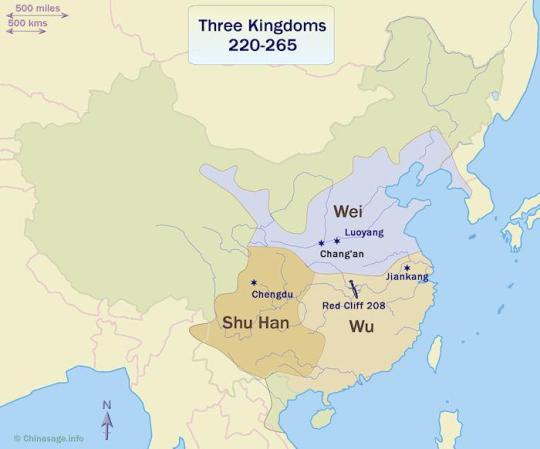
View On WordPress
#Buddhism#cao cao#cao pi#collapse of han dynasty#eunuchs#grand canal#jin dynasty#manchuria#shaanxi#shu#sui dynasty#wei#wendi#wu#xiongnu#yangdi#yellow turban rebellion
4 notes
·
View notes
Text
Scholars have conducted a groundbreaking study of the "Mongolian Arc" – a 252-mile (405 km) stretch of the Great Wall of China, in an attempt to bridge the gap between history and speculation.
From its hasty construction during the Jin dynasty to the puzzling gaps that challenge traditional perceptions, was it a defense against Mongol invaders or a complex network regulating movement and taxation?
Researchers continue to unearth the truth with cutting-edge research and a multidisciplinary approach using satellite images, maps, and on-site observations to unlock the secrets of this ancient marvel.
16 notes
·
View notes